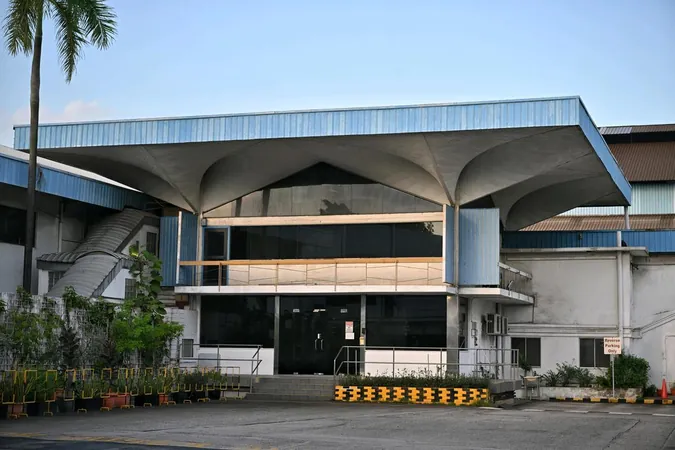
Historic Buildings in Singapore Set for Conservation: A Glimpse into the Past
2025-06-26
Author: Sarah
Preserving Singapore's Architectural Heritage
In a significant move to honor Singapore's architectural history, the Urban Redevelopment Authority (URA) has proposed conserving several key sites, including the iconic Steel Pavilion of NatSteel and the former Pasir Panjang English School. These sites not only represent crucial fragments of the nation's past but also reflect the evolution of its educational and industrial landscape.
The Steel Pavilion: A Landmark of Industrial Evolution
The Steel Pavilion, completed in 1963, served as NatSteel's main office for years and is a testament to Singapore's industrial prowess, particularly in steel production. Recognized for its historical significance, this two-storey structure has caught the attention of the URA as it transitions towards a more inclusive conservation strategy, acknowledging landmarks that symbolize Singapore’s growth post-independence.
A Nod to Educational Heritage
The former Pasir Panjang English School, which opened its doors in 1933 and shuttered in 1986, will also be part of the conservation efforts. This school played a vital role in the education landscape of the area. The URA aims to preserve its U-shaped main building, showcasing the standard designs of schools from the early 20th century, a period when education underwent transformative changes in Singapore.
Broader Conservation Strategy Revealed
These conservation proposals are part of URA's Draft Master Plan 2025, which emphasizes not only the preservation of colonial-era structures but also highlights the importance of landmarks from Singapore's post-independence era. With over 7,200 conserved structures nation-wide, the URA is now focusing on a thematic approach—grouping buildings into categories such as economy, housing, social, and defense to identify historical significance.
20 Buildings at Bukit Timah Turf City to Be Saved
In addition to the Steel Pavilion and the Pasir Panjang English School, 20 buildings at the former Bukit Timah Turf City are slated for conservation. This includes management bungalows and stables that represent the historical essence of the racecourse, reflecting the versatile uses of the site. The preservation effort aims to integrate these structures into future residential developments, creating vibrant neighborhoods rooted in history.
Community Engagement and Future Plans
Mr. Eugene Ng, NatSteel's Vice-President for Strategy, expressed enthusiasm over the conservation discussions, signaling potential community engagement opportunities. He believes the preservation of the Steel Pavilion will allow the community to connect with the industrial processes behind steel production.
A Comprehensive Framework for the Future
As part of its long-term vision, the URA has introduced a new thematic framework to guide future conservation efforts. By categorizing buildings into distinct themes of economy, housing, social, and defense, the URA aims to weave a narrative of Singapore's development while also enhancing urban living spaces.
Looking Ahead: Identity Nodes and Corridors
On June 25, 2023, the URA unveiled plans for new identity nodes, bringing a total to 21, which will maintain Singapore's cultural character. Upcoming developments include pedestrian-friendly spaces and recreational areas across the city, fostering community engagement and preserving the essence of each neighborhood.
The effort to conserve these historical landmarks highlights Singapore's dedication to preserving its rich heritage while planning for a future that honors the past. As these sites are transformed into integral parts of the urban landscape, they will continue to tell the story of Singapore’s journey through the decades.



 Brasil (PT)
Brasil (PT)
 Canada (EN)
Canada (EN)
 Chile (ES)
Chile (ES)
 Česko (CS)
Česko (CS)
 대한민국 (KO)
대한민국 (KO)
 España (ES)
España (ES)
 France (FR)
France (FR)
 Hong Kong (EN)
Hong Kong (EN)
 Italia (IT)
Italia (IT)
 日本 (JA)
日本 (JA)
 Magyarország (HU)
Magyarország (HU)
 Norge (NO)
Norge (NO)
 Polska (PL)
Polska (PL)
 Schweiz (DE)
Schweiz (DE)
 Singapore (EN)
Singapore (EN)
 Sverige (SV)
Sverige (SV)
 Suomi (FI)
Suomi (FI)
 Türkiye (TR)
Türkiye (TR)
 الإمارات العربية المتحدة (AR)
الإمارات العربية المتحدة (AR)